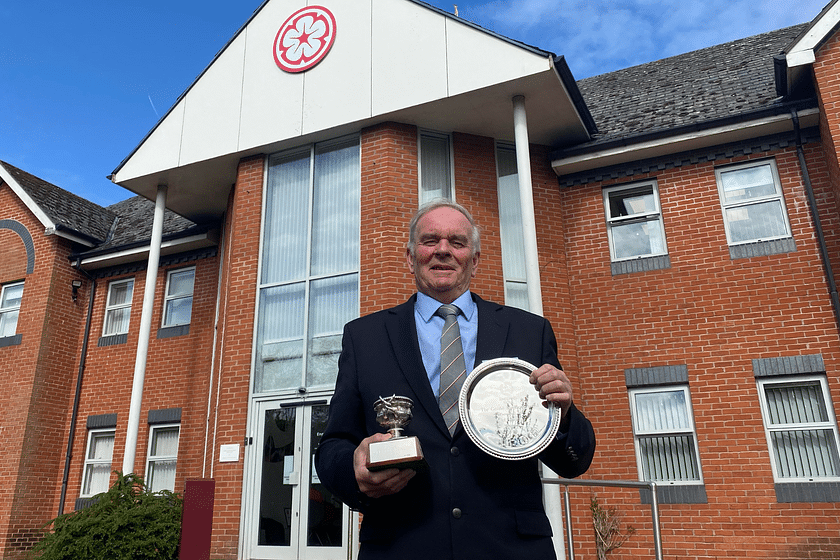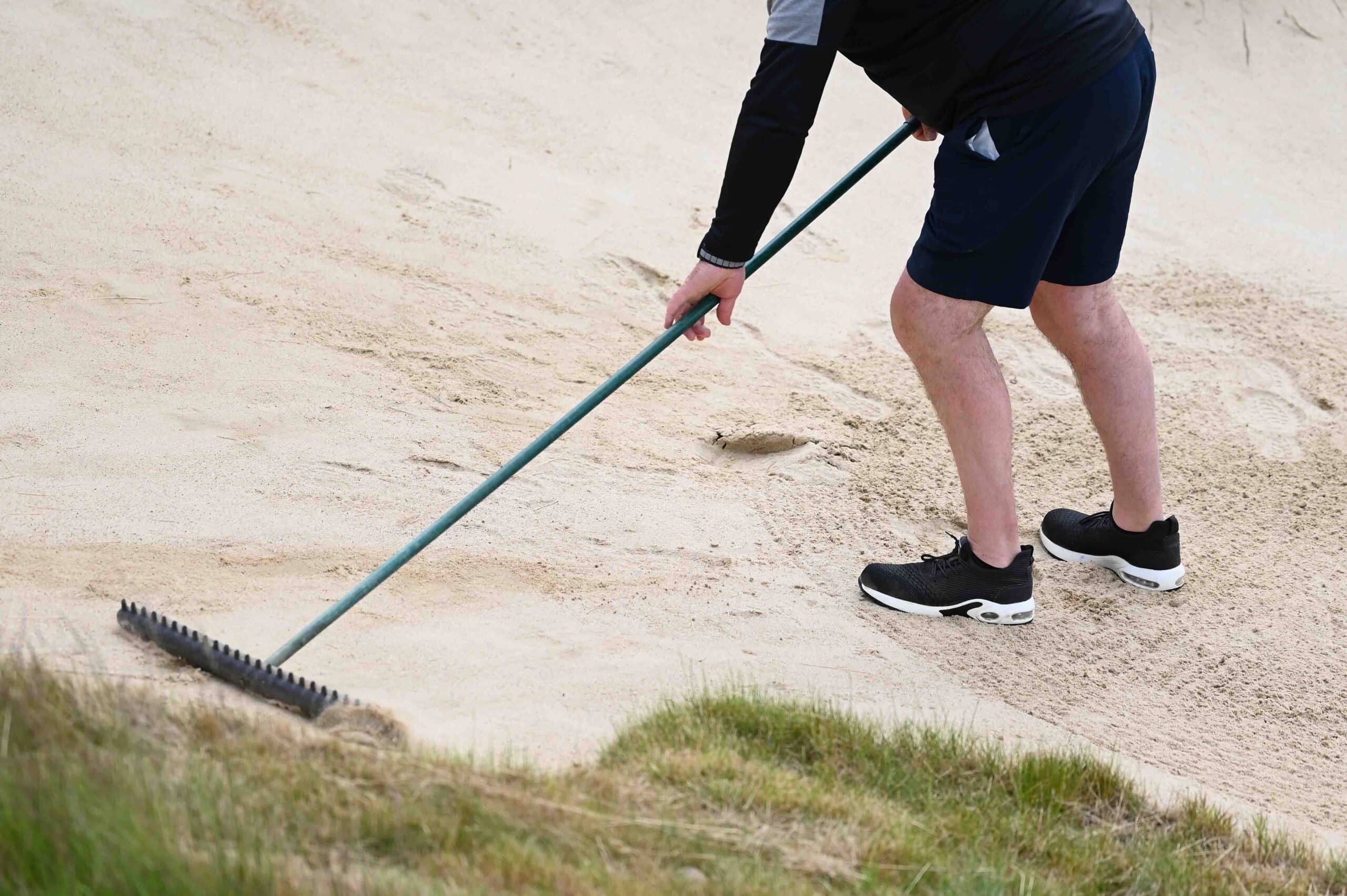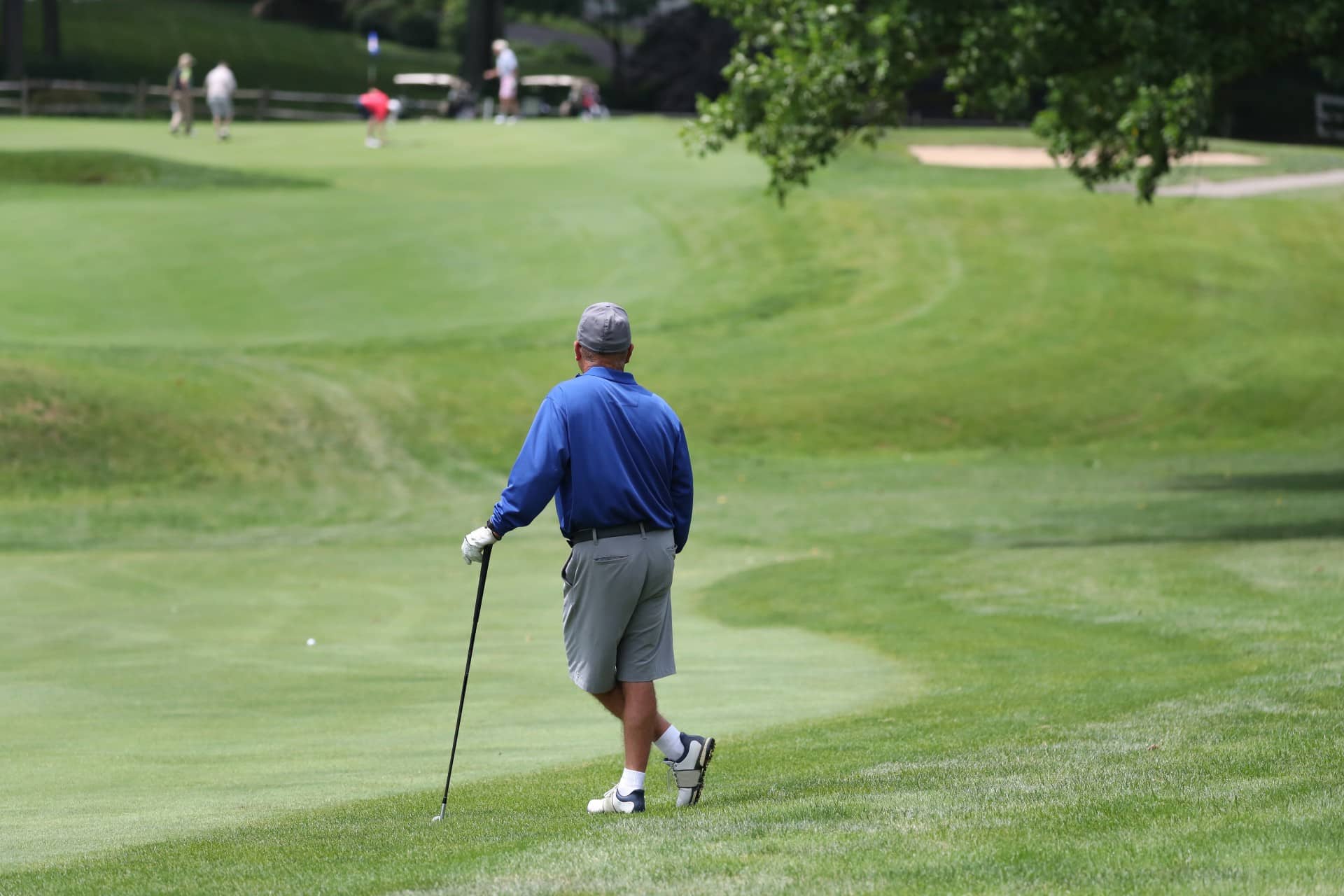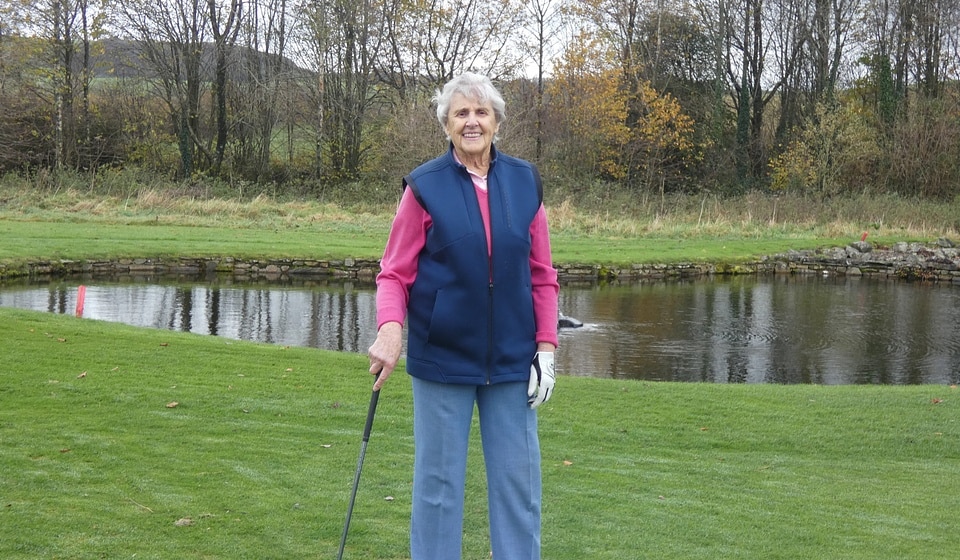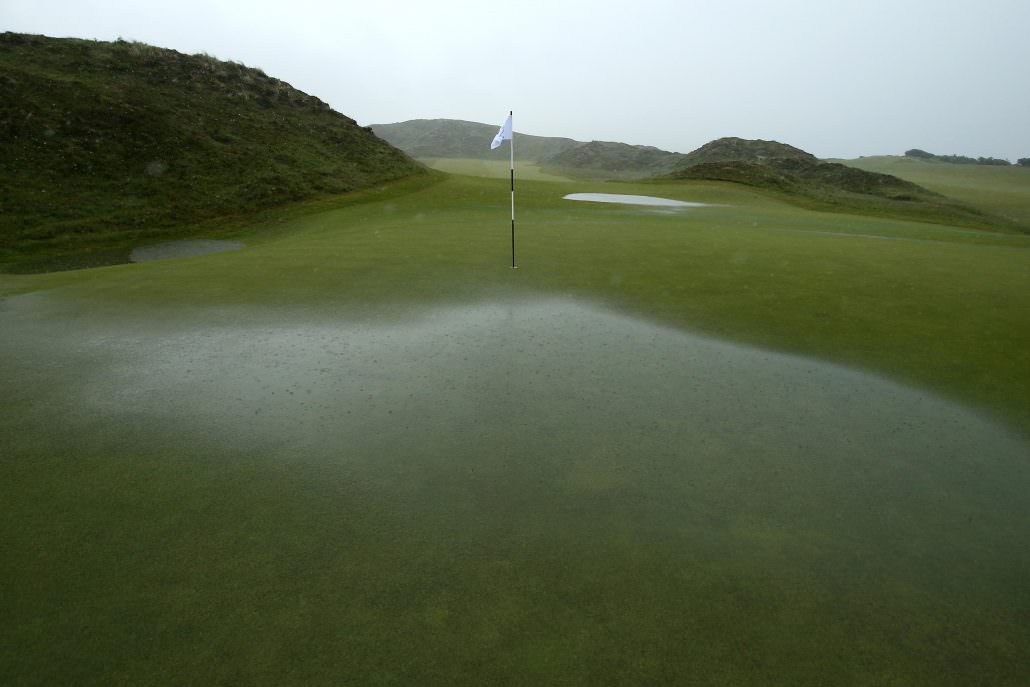
Why is your course closed? This is how much damage the rain is doing
It’s only mid-October but the ‘course closed’ signs are already out in force across the country. The real concern is this is only the beginning of a bleak and long winter. So how does rain affect golf courses? We spoke to Lee Strutt, an experienced greenkeeper, and Sam Bethell, a course manager for many years, to get an expert view…
How does rain affect golf? Walking on wet grass really damages it
We think grass grows in soil. It doesn’t. The roots actually grow in air spaces between soil particles.
“Imagine the soil is like a sponge,” says Strutt. “There are some pockets we want with air and some we want with water.
“Because of that honeycomb effect, water can freely drain through the soil profile. If we start walking on these soils when they are saturated then a lot of those little pockets get closed up and water can’t move through as easily and it takes a lot longer to dry out.”
“When you’ve got water going through the profile, gravity will take it down but it gets to a point where it can go no further,” adds Bethell.
“When you get more on top, you’re reaching saturation point. If the roots haven’t got any air, there’s only so much time they can sit in water before they get weak and start to die off. That’s why you’ll see waterlogged grass start to go brown. The roots can’t take it.
“If you walk on it, and it’s wet from the top down, you just compact it and push the grass into the soil. You are crushing the area where the roots are. All those pore spaces for air and water are being compacted and squashed. That’s why the water comes up around your feet.”
How does rain affect golf? That damage may last months
It will stop heaving, eventually. But, if a course has had heavy play, the damage won’t be repaired any time soon.
“It’s very similar to frost,” explains Bethell.
“You could walk out on a golf course and see there’s no frost. It could be frozen, though, but you can’t see it.
“Rain is the same. It will start drying out from the top but it doesn’t mean that a couple of inches under it isn’t still soaking wet.
“It has got to work down and gravity has to do its thing.”
Strutt adds: “We might start seeing some deterioration in the playing surface, and the time we really want the plant to perform well – the following summer – all the damage within the soil might take several months to recover and require remedial action and additional works to put right.
“We’re six months away from where we hit warm growing weather again. Any damage or issues we have now, we are not going to really have recovery until next April or May.”
How does rain affect golf? It’s a vicious circle
No sooner do we get over one big downpour, another follows right behind. So here’s what happens to our courses if October continues into a wet winter.
“It’s a greenkeeper’s worst nightmare,” admits Strutt. “Wet warm winters and increased disease activity equals more cost, greater deterioration of surfaces through continued wet periods and, effectively, gains made in the summer would be lost for the following season.”
Says Bethell: “We can’t stop nature. We can’t change the weather and we can’t stop it raining.
“But we can stop people and we can stop buggies and trolleys. That is something we can control. That’s why you’ll get a lot of roped off areas. It’s horrible to look at but, without that, it would be absolute carnage.”

This article originally appeared in National Club Golfer in October 2019.
Subscribe to NCG
Steve Carroll

A journalist for 25 years, Steve has been immersed in club golf for almost as long. A former club captain, he has passed the Level 3 Rules of Golf exam with distinction having attended the R&A's prestigious Tournament Administrators and Referees Seminar.
Steve has officiated at a host of high-profile tournaments, including Open Regional Qualifying, PGA Fourball Championship, English Men's Senior Amateur, and the North of England Amateur Championship. In 2023, he made his international debut as part of the team that refereed England vs Switzerland U16 girls.
A part of NCG's Top 100s panel, Steve has a particular love of links golf and is frantically trying to restore his single-figure handicap. He currently floats at around 11.
Steve plays at Close House, in Newcastle, and York GC, where he is a member of the club's matches and competitions committee and referees the annual 36-hole scratch York Rose Bowl.
Having studied history at Newcastle University, he became a journalist having passed his NTCJ exams at Darlington College of Technology.
What's in Steve's bag: TaylorMade Stealth 2 driver, 3-wood, and hybrids; TaylorMade Stealth 2 irons; TaylorMade Hi-Toe, Ping ChipR, Sik Putter.


